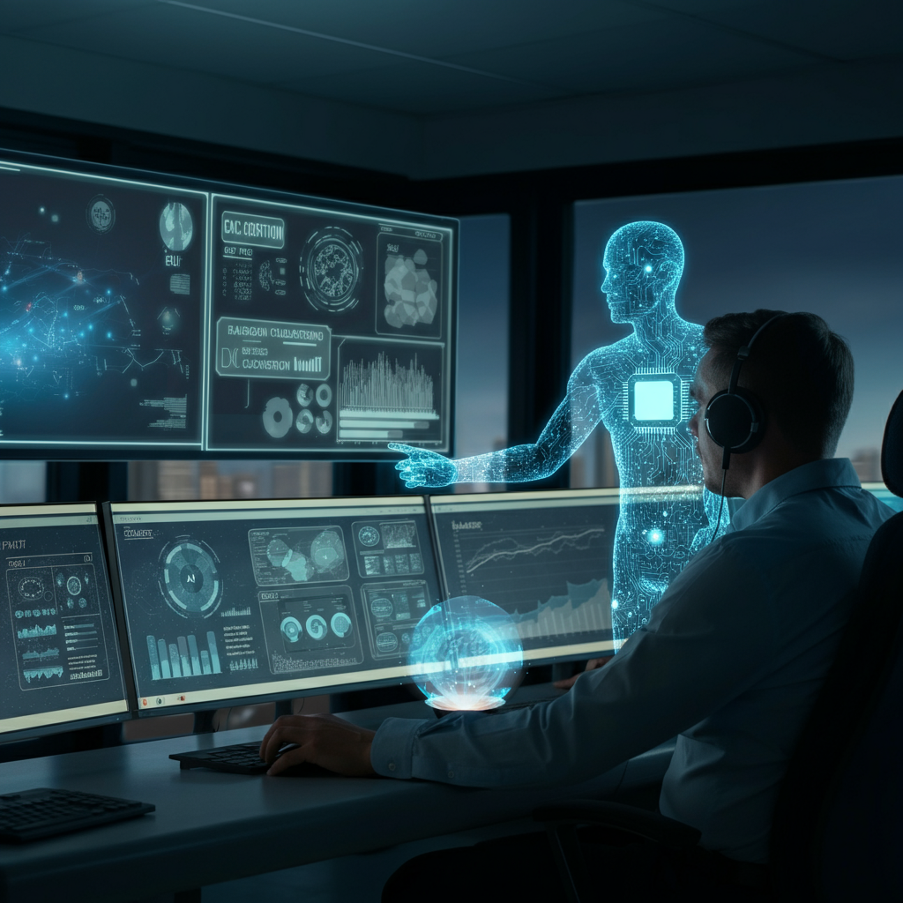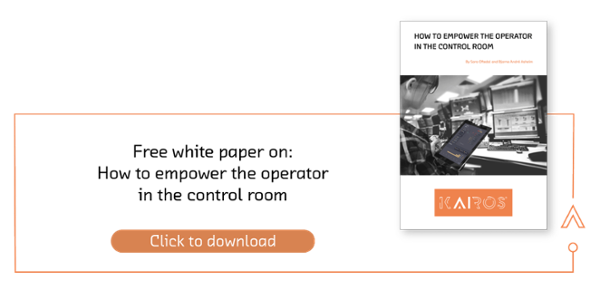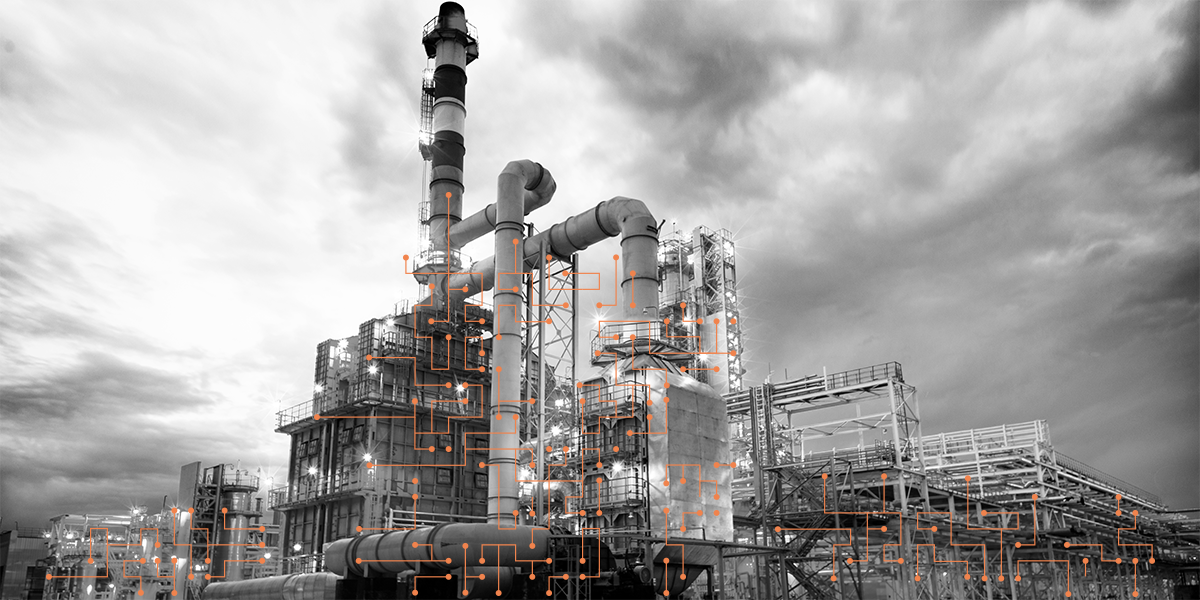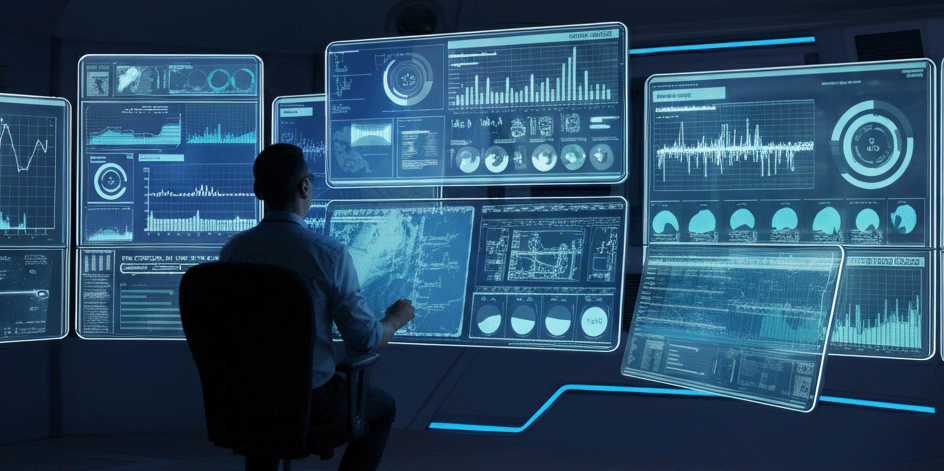Control room operators are the backbone of industries like nuclear, oil and gas, petrochemicals, and process industries. They manage intricate systems, oversee critical processes, and react quickly to unforeseen incidents to ensure safety, efficiency, and continuity in operations. But with Artificial Intelligence (AI) and machine learning breaking new ground, one question stands at the forefront of industry discussions: Can AI replace these operators?
The answer is multi-faceted. To fully understand, we must examine the complexity of control room operations, the role of AI in enhancing efficiency, and a vision for future advancements, including autonomous plants.
The operator’s role in complex systems
Control room operators perform high-stakes tasks where precision is vital. The role is basically to take action when or at best before the automation system can´t handle the situation. Operators monitor dynamic systems, diagnose root causes of issues, and take quick corrective actions. These responsibilities demand sharp situational awareness, adaptability, and decision-making skills.
For instance, if a system exceeds its operating parameters, operators interpret real-time data and act based on context, experience, and intuition. Tools like Distributed Control Systems (DCS) and decision-support systems assist them, but ultimately the accountability lies firmly with the human operator.
The rise of AI in control room operations
AI technologies are reshaping control room operations by adding efficiency, precision, and predictive capabilities. Key applications include:
- Predictive maintenance: AI forecasts equipment failures, allowing for proactive repairs.
- Anomaly detection: Systems can identify early signs of abnormal conditions to prevent escalation.
- Data insights: Advanced models uncover trends and relationships in data that would take humans hours, if not days, to analyze.
While AI undeniably boosts productivity and accuracy, its current role is auxiliary, supporting operators rather than replacing them outright.
Challenges of full automation
Despite incredible advancements, AI faces boundaries that hinder full automation:
- Contextual understanding: Operators can view issues in a wider context, which AI often struggles to replicate.
- Complex diagnosis: Digital measurements often point towards multiple failures and risks, and human interpretation is needed to understand the correct root cause and scenario.
- Novel situations: AI relies on past data and struggles with entirely unprecedented events.
- Regulatory & ethical barriers: Safety-critical industries demand human oversight for accountability and ethical considerations.
It’s clear that, for now, AI works best as a collaborator, not a standalone solution.
A new horizon: Autonomous plants
Looking beyond the question of replacing operators, the industrial world is shifting focus to autonomous plants. These facilities aim to operate with minimal human intervention, thanks to technologies such as AI, IoT (Internet of Things), and robotics.
The role of AI in autonomous plants
AI is the driving force in developing fully autonomous plants. Here’s how it can help:
- Real-time decision-making: AI algorithms respond instantly to data inputs. For instance, if a temperature sensor detects overheating, AI can redirect operations to mitigate risks without waiting for human input.
- Robotics & automation: Automated machinery managed by AI performs tasks ranging from routine maintenance to complex repairs.
- IoT integration: AI connects IoT devices within the plant, consolidating data from sensors to provide a unified view of operations. This interconnected “nervous system” ensures smarter, data-driven decisions.
- Self-optimization: By learning from ongoing operations, AI can continuously optimize processes to improve efficiency, productivity, and sustainability.
Transformative Benefits
Autonomous plants promise significant advantages, including:
- Enhanced efficiency: Processes run faster and more reliably when managed by intelligent systems.
- Improved safety: Removing humans from hazardous scenarios reduces workplace risks.
- Cost savings: Predictive technologies lower costs associated with downtime and operational inefficiencies.
- Sustainability goals: AI-driven energy management and waste reduction align operations with environmental objectives.
Challenges of Autonomous Plants
Despite their potential, autonomous plants face considerable challenges:
- Complex system design: Building a fully self-sustaining plant requires seamless integration of AI, robotics, and IoT, which is technically demanding.
- Equipment failure: Autonomous plants face the critical challenge of equipment failures disrupting operations. AI-powered predictive maintenance can help identify risks early, using real-time data to detect wear or abnormalities, however equipment failure still needs attention by humans.
- Cybersecurity threats: Increased reliance on connected systems raises vulnerability to hacking and data breaches.
- Ethical implications: Automating roles impacts employment, raising questions about reskilling workers and the social impact of automation.
- Accountability gaps: Determining liability in case of errors caused by autonomous processes remains a legal and ethical gray area.
AI as the Bridge
The transition to autonomous plants underscores the vital role of AI in connecting human-dependent operations today with the self-sustaining facilities of tomorrow. By gradually taking over routine tasks, optimizing systems, and supporting human operators in decision-making, AI acts as a bridge between these two worlds.
Balancing autonomy and human oversight
While the idea of fully autonomous plants is enticing, true independence may still be years away. The unpredictability of industrial processes and the importance of human judgment means that plant operations will always need a human touch — even in an AI-dominated future.
A collaborative approach is therefore key. AI systems should complement human expertise, focusing on areas where technology excels, such as pattern recognition and data analysis, while leaving creative problem-solving and ethical decision-making to people.
Final thoughts
The future of control room operations is less about replacing operators and more about redefining their roles. AI will enhance human capabilities, taking plants closer to autonomy while utilizing human oversight for safety and accountability.
The vision of autonomous plants is within reach, fueled by advancements in machine learning, IoT, and robotics. Industries that strike the right balance between AI and human expertise will lead the way, proving that the harmony of technology and talent is the ultimate key to success.
The question isn’t whether control room operators can be replaced by AI. The real question is how humans and AI can evolve together to build safer, smarter, and more efficient systems, bridging the present to a future of unparalleled operational excellence.








